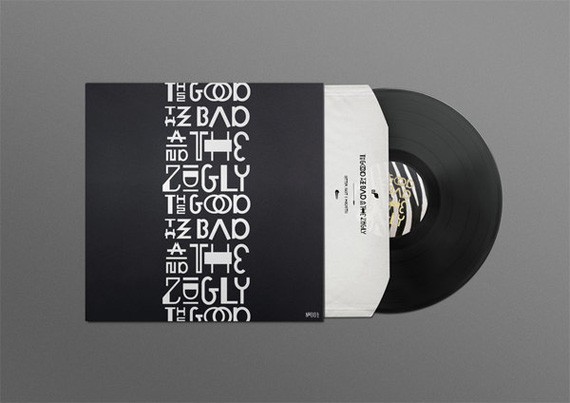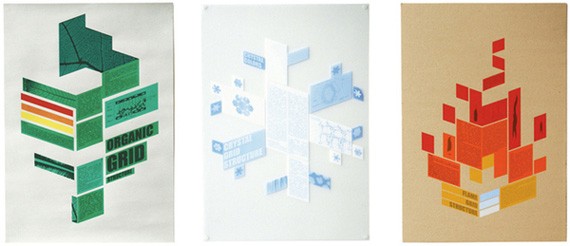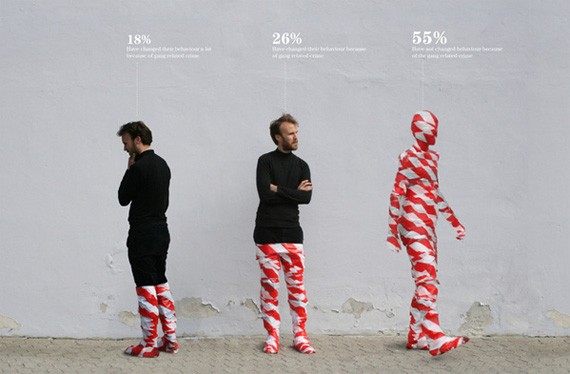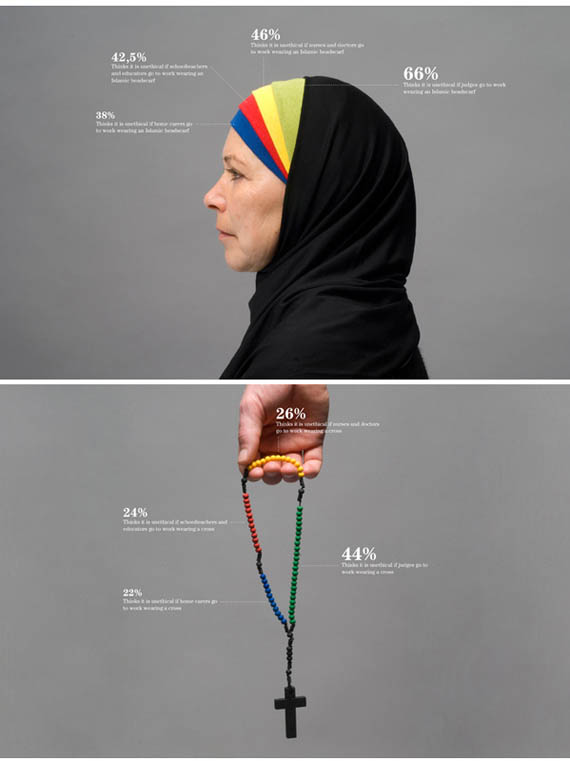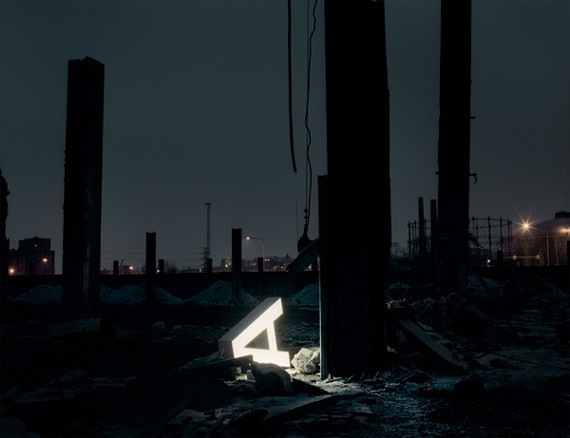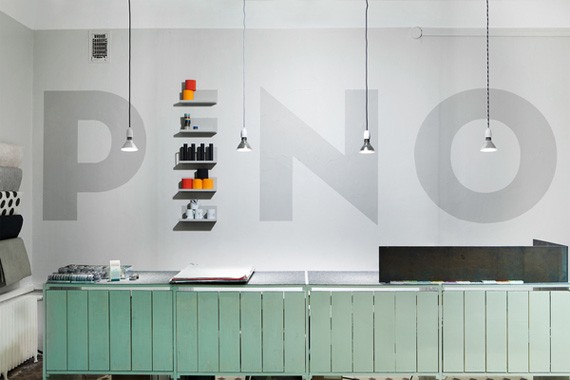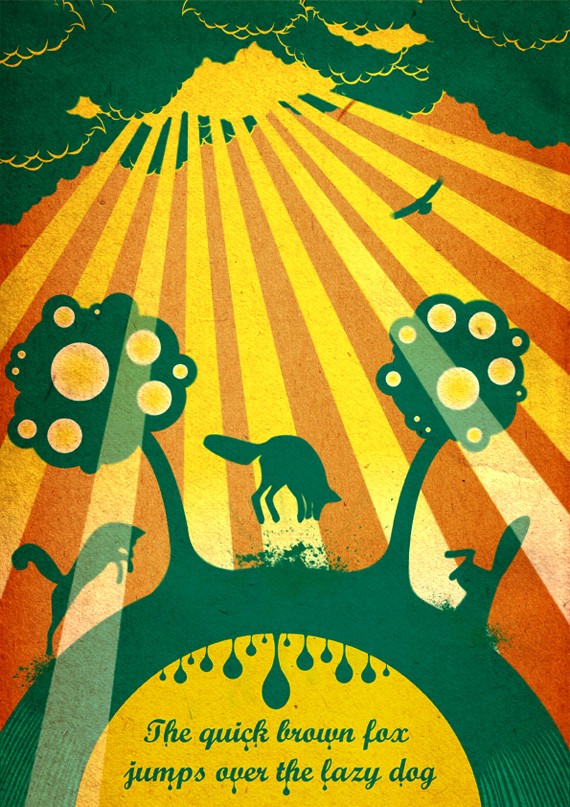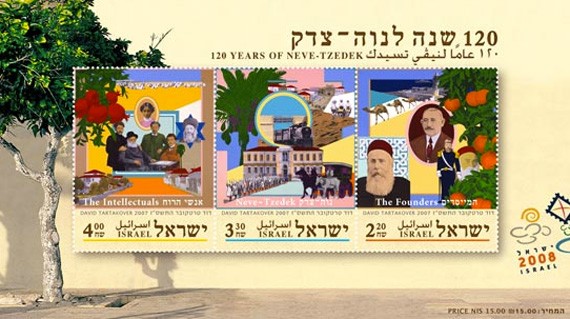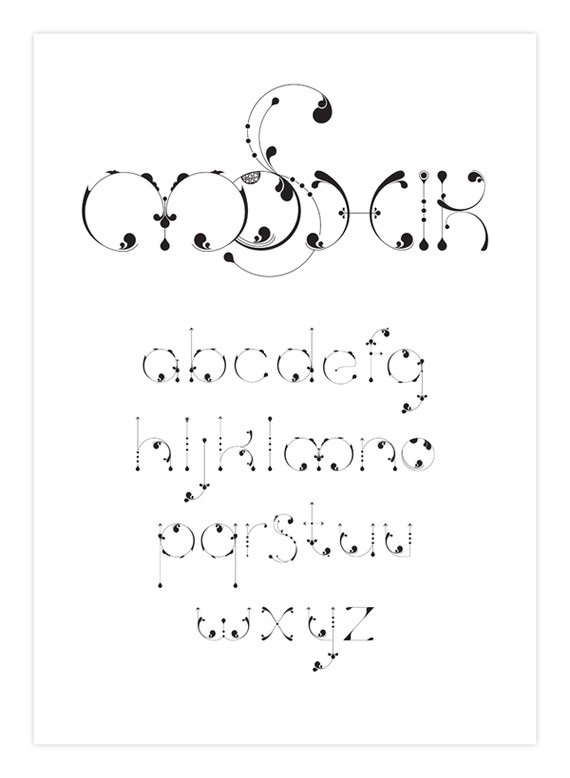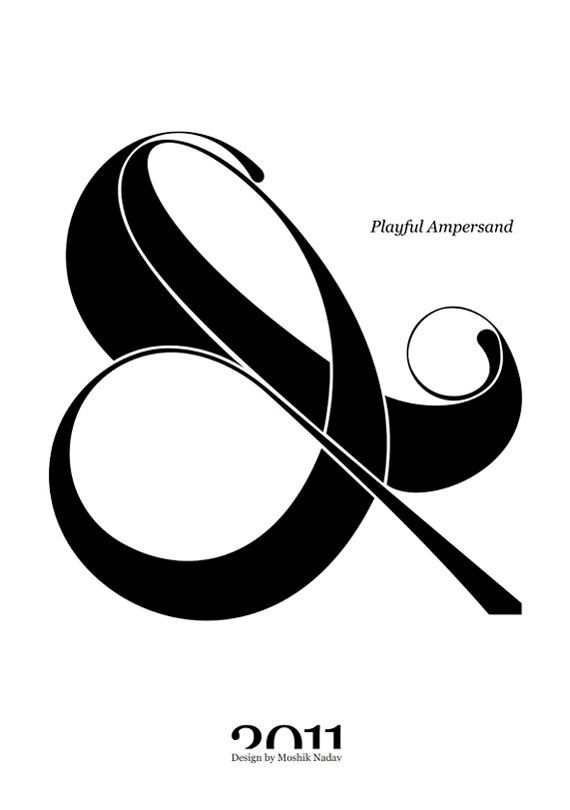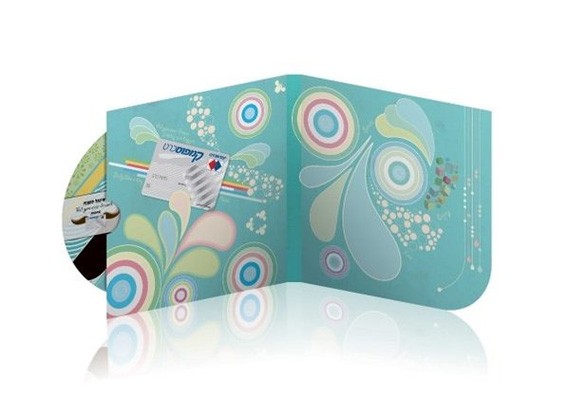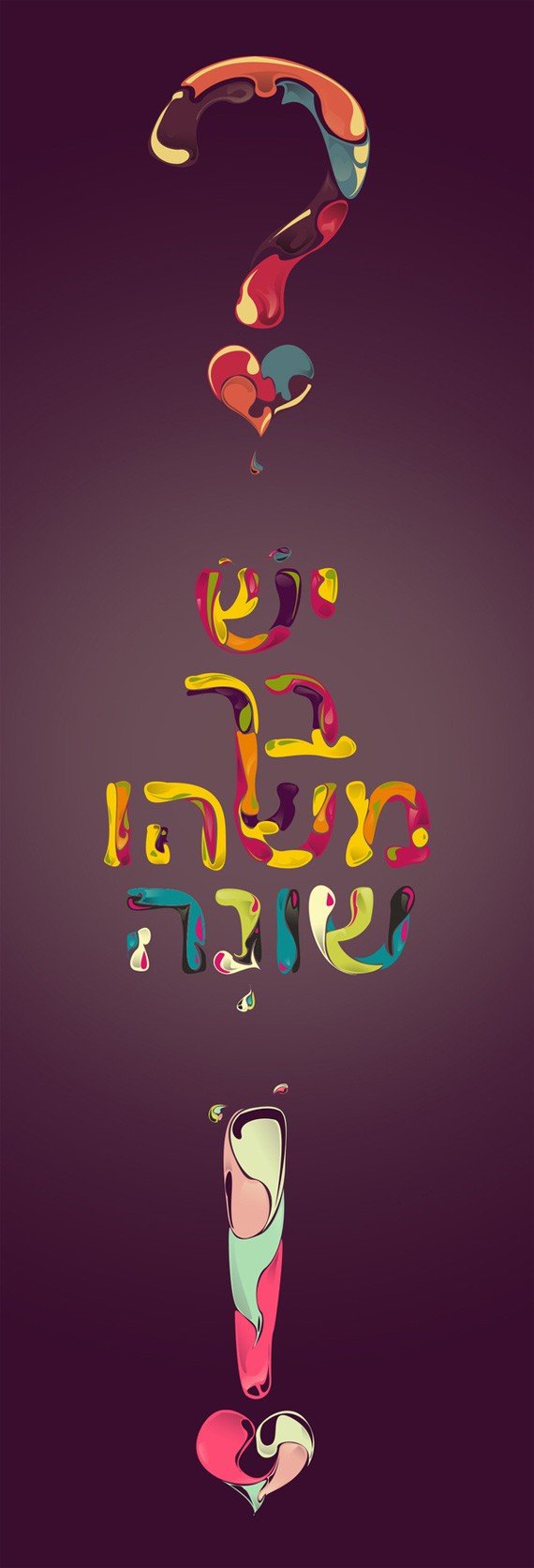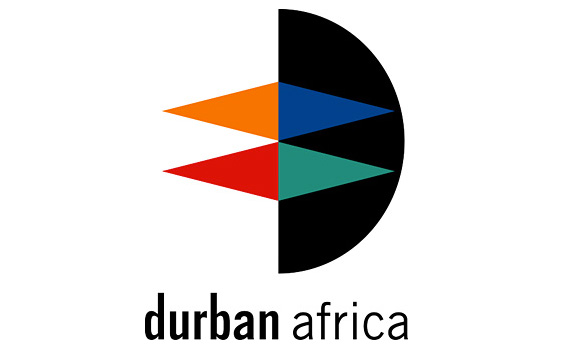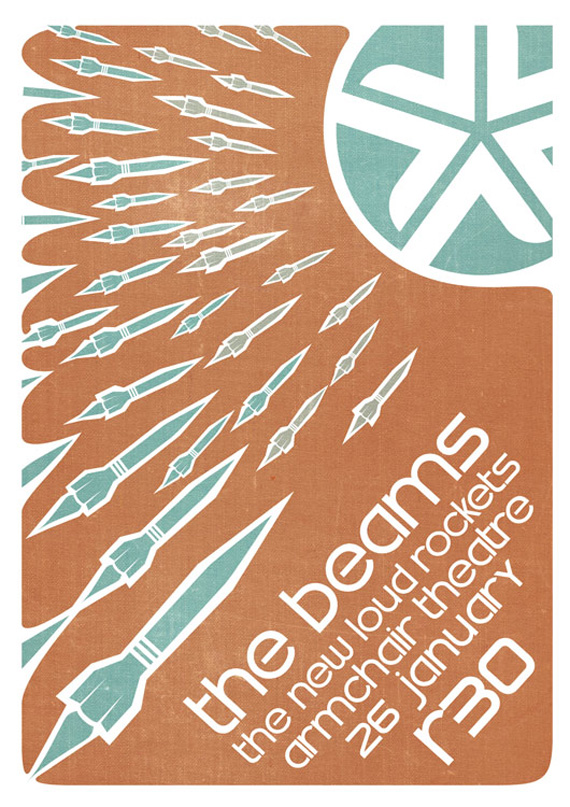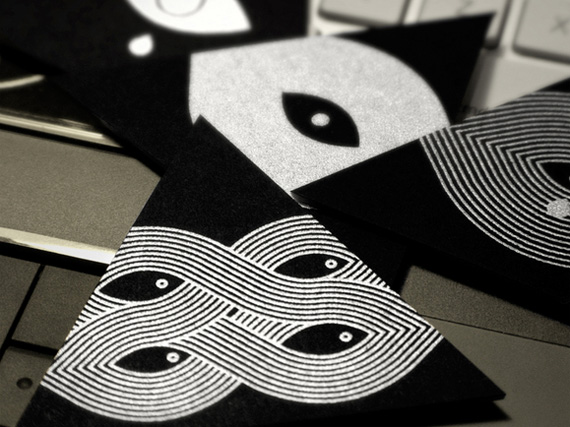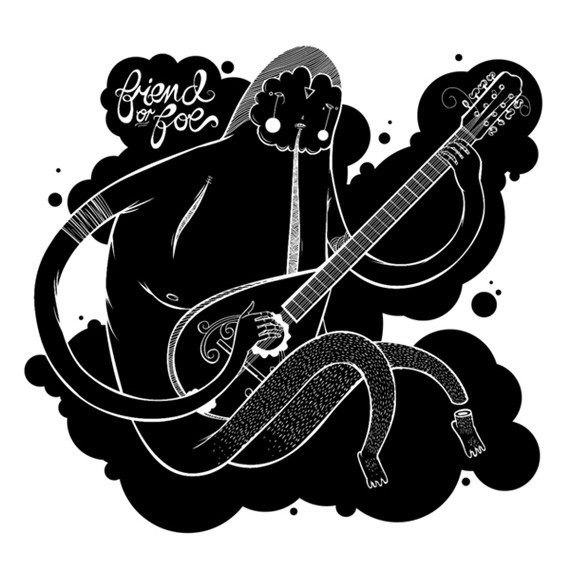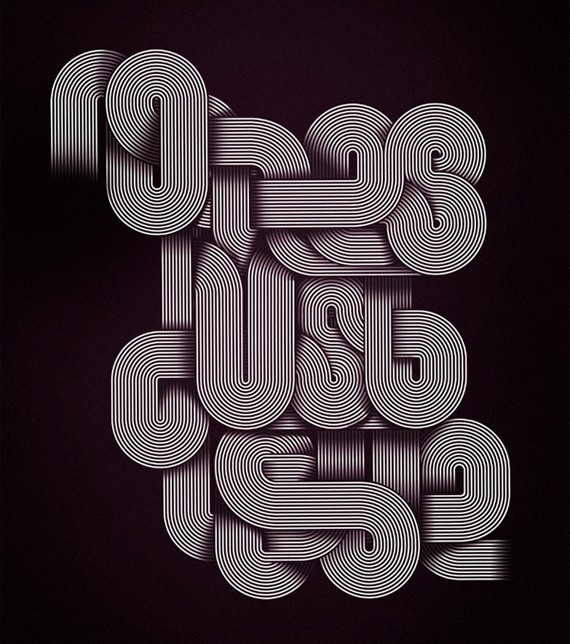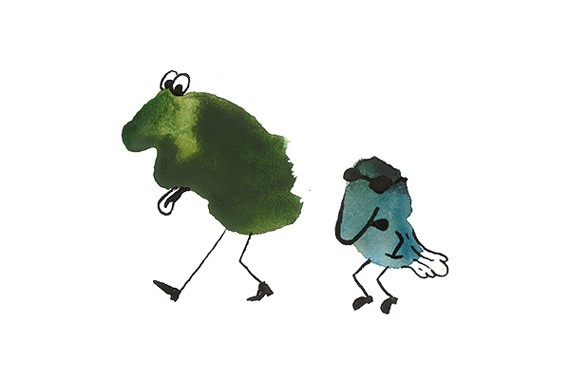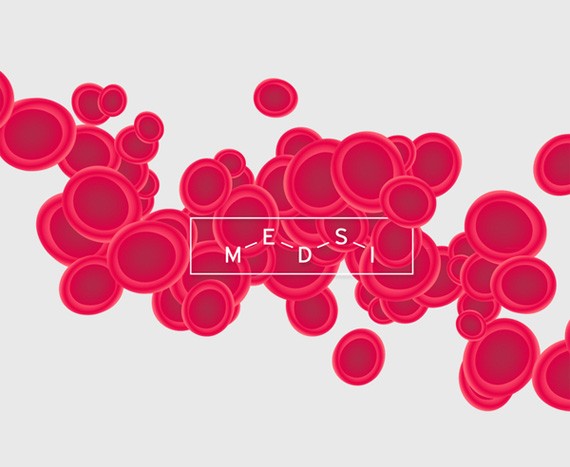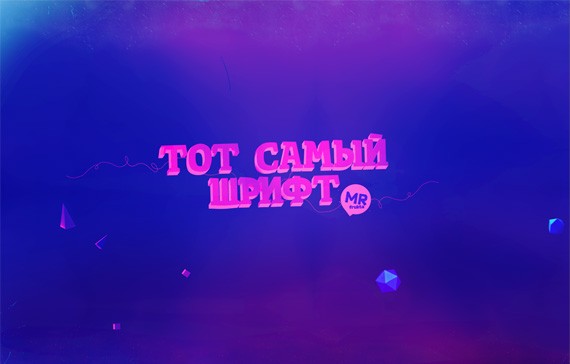Worldwide Graphic Design: How Different Nationalities Design Part 2

You asked for more, so you got it. We’ve covered Latin American, Middle Eastern, Dutch, Chinese and Japanese graphic design. It was a beautiful introduction to art from our brothers who speak different tongues. Graphic Design can be dramatic, emotional, powerful, romantic, serene, political or even all of the above.
Now we’re going to cover lesser known, but still equally powerful and equivocal graphic design from around the world. This time we hand the floor to Scandinavia, Israel, Russia and Africa.
Scandinavia
Scandinavia is located in northern Europe and includes Denmark, Sweden and Norway and sometimes Greenland, Finland and Iceland. Scandinavia is comprised of first world countries, which are, according to survey, among the happiest people on earth.
As one may expect, Scandinavia is relatively advanced in the field of graphic and web design. They are in fact the leaders of design in this generation. Minimalism is a common theme. From architecture, furniture, advertising, to graphic design, they certainly know how to wow.
Orestad Gymnasium in Denmark. Photo by Beneighteleven
Yes, Scandinavian design is known for its minimalism and simplicity. They believe that it doesn’t take a lot of elements to create beauty. It’s all about creating awe for the spectators, but it does not need to be showy. Their design aesthetic is more functional and goal-oriented than decorative and fussy.
Packaging design by Norwegian Designer Ludvig Bruneau Rossow
Homework by Jack Dahl
But this does not mean that Scandinavian designs look professional and minimalist, or it can get boring. They know how to have fun with color and elements too! Designs below are colorful and playful, but still very distinctly ‘Scandinavian’.
London Tray by Maria Dahlgren
Vacation in Europe by Erik Wingquist
Web design reflects much of the Scandinavian design aesthetic. It is clean, no fuss and fluid. But unlike graphic design, it is more aware and open to the international scene. It borrows a lot of international ideas, particularly from the US and UK. Below is the web site of award-winning freelance designer Gummisig.
Gummisig
In a few words, Scandinavian graphic design is chic, bold and modern. They keep their heritage intact, and at the same time they do not ‘try too hard’ to keep up with other countries. This is what makes Scandinavian design beautiful: it is cool, but doesn’t try too hard. Despite being individualistic in nature, Scandinavian graphic design has been inspired from a few key design elements and concepts from her neighbors in Scandinavia, Austria and Germany.
Scandinavian Graphic Designers
Peter Ørntoft
Peter Orntoft of Copenhagen, Denmark describes himself as a visual communicator. His works are smart, innovative and modern. He knows his field very well; to have the ability to be playful and still get his message across.
Organic Grid
Information Graphics in Context
Aleksi Hautamäki
Aleksi Hautamäki is a designer based in Helsinki, Finland, specializing in branding environments. He has worked with various huge multinational companies like Apple, Adidas, O2, etc.
Måns Wikström
Måns Wikström is based out of Stockholm, Sweden. He loves using color without compromising Scandinavian aesthetic, and is liberal on using different techniques in design.
Zebra
Israel
Israel is a modern country with an old heart. In some places it is a busy metropolis, but in some it still looks like the ancient Canaan in the Bible. It’s a place where outsiders looking in cannot help but get fascinated.
Israel is rich in culture, so you expect to find rich art and graphic design. On the streets you hear different tongues being spoken–English, French, Turkish, Spanish, Arabic, and of course, Hebrew. Hebrew is a writing system that has been used for thousands of years. The 22-letter alphabet has evolved from the Phoenician language, also borrowed by the Ancient Greeks, Latins and eventually Arabic and Cyrillic. Israel is the only place now that still speaks and writes in Hebrew. As seen in the Dead Sea scrolls, so little has changed of the alphabet since ancient times.But with the changing times, new needs arose. It used to be used for purely religious purposes but has since catered to the needs of new communication and commercial needs. It has been used for advertisements, posters, billboards, packaging, magazines and more.
by Nine 99, Image by Popsop
The ancient alphabet is given a new look fit for the modern times. Below is a photo of a poster for Festival Beshekel, a music festival for Israel.
by Moshik Nadav
Israel is a young state despite its 3,000 years of existence; because of this, they are still yet to form their own identity. Israeli graphic design is heavily influenced by the Western motifs but still retains attributes of Israeli culture. Israel design makes use of imagery for cultural and political messages with traditional themes; often easily understood by the locals but leaving foreigners totally unaware.
In summation, I noticed three things with Israel web design:
1. There is strong use of Flash based designs. The Middle East Asian state loves Flash and animation, it’s quite popular there. CSS is not popular, in fact many local clients have no idea what it is.
Segal Wines
2. Israelis know branding like their own. In fact if they have a specialization, maybe it’s this. Their portfolio in branding is just impressive.
3. Again, typography is one of the most interesting aspects of Hebrew web design. The alphabet of course evokes a religious appearance; so the problem of most designers is how to use the alphabet for a more modern and commercial side.
Israeli Graphic Designers
David Tartakover
David Tartakover is an accomplished Israeli laureate, artist, author and lecturer. His works often have strong political, cultural and historical messages.
Stop the Madness, Stop the War
12o Years of Neve-Tzedek
Moshik Nadav
A graphic designer who specializes in typography, so it may be more proper to refer him as a typeface designer. He has worked with both the Hebrew and the standard English alphabet.
Moshik
Playful Ampersand
Roma Muskalyuk
Another talented graphic designer with an impressive portfolio. He takes on works of art in a fun and fresh way,dissecting common elements and making them his own. Roma Muskalyuk’s works are influenced by the Western modern art but still retain the traditional quality that is distinctly Hebrew.
AUM
There's Something Different About You
Love
Africa
South Africa is a little different than the rest of the places mentioned because there is no single culture here. It has been dubbed as the ‘Rainbow Nation’, referring to its rich cultural and ethnic diversity. South Africa is known as a rich melting pot of different cultures. There is religious tolerance as there are many different faiths including: Muslim, Christian, Sunni, Hindu or Buddhist. A lot of different languages are spoken in South Africa, such as Khoisan, Indian and English.
L'enfant Jesus by Garth Walker
South Africa was indeed the cradle of humanity–and many experts believe this is the place where the first human society existed. The oldest art in the world is found in this region. Art has been found dating at least 75,000 years ago, in the form of necklaces or cave paintings.
Primitive Ancient Art by the San People
As the region was subsequently colonized by different countries like the British and the Dutch, art also takes up a new form. Merging western influenced art with the folk art of Afrikaner, Trekboers created an eclectic mix which is still evident today.
Lino print by Gregoire Boonzaaier
Today, South Africa boasts a bustling art scene that is diverse, modern, contemporary, but again primitive, soulful and close to nature.African graphic design is very new, but has an old soul. Because of its very young age she has yet to create an identity. She has borrowed a lot of elements from Western graphic design, but merges modernism with ancient Afrikan art.
South Africa is a lot like Latin America when it comes to their passion for music, festivities, sport and football. Throw in a bit of the African vibe to it and you’ll get a visual fusion that is fun, unique, soulful and otherworldly.
Photo by South African Design
Design for a Board Game, by Carel de Beer.
Website by Am I Collective, a design collective based in Africa.
African Graphic Designers
Garth Walker
Garth Walker is an internationally reputed graphic designer based in South Africa. In 1994 he opened Orange Juice Design which became one of the country’s best known design studios. It was later acquired by Ogilvy South Africa. In 2008, Walker opened his new and solo design studio, Mister Walker. He specializes in visual design and branding.
Packaging Design
Web Design
Ian Jepson
Ian Jepson’s designs and illustrations are characteristically quirky and smart. He is currently working for Am I Collective and is based in Cape Town, South Africa.
This South African artist/illustrator has strong and poignant works in his portfolio. His works are unique and have a soul to them; they are lively on their own despite the artist’s preference for limited use of colors.
Business Cards by Metcalf
Friend or Foe
No Lies Just Love
Russia
Russia has 1/6 of the world’s land mass. This enigmatic giant is mysterious and seductive; charming but elusive. Russia has made great contributions to art since her inception, such as classical music, fine art, literature and ballet.
Russian Constructivism has a huge impact on Russian graphic design today. The art movement is a form of abstract art; rejecting pictorial representation and instead evoking emotion through color and shapes against negative space.
by El Lissitzky, one of the first pioneers of Russian Constructivism. Platypus 1789
The art movement was a strong driving force in the industry. It has widened its horizons since the 1920s, moving from the canvas to photography, typography, printmaking and graphic design. In the past, the former communist USSR closed off international ties, but now we see that they are opening more and more to the world. They are beginning to adopt international concepts and influences, which is very remarkable in art.
Below is a work by Alexey Frolov, a Russian designer, who is obviously inspired by Russian constructivism. Today the art movement is still used by many designers with equal zest and energy.
by Alexey Frolov
As for Russian web design, layout is always smooth and dynamic. It doesn’t use as much Flash as other cultures, preferring Javascript and xHTML.
by Losinsky Vladimir
Some web designers joke about hating to work with the Russian Cyrillic alphabet. They find it old-fashioned and inflexible; but they find ways to get by through playing with the typography for a more modern look.
Russian Graphic Designers
Roma Lubimov
Lubimov’s works are filled with life and energy. Surreal, dream-like and almost out of this world–that’s how I would describe his design aesthetic.
Shadows on my Wall
XL
Medsi
Alexey Frolov
Alexey Frolov’s work has that characteristic powerful silence. Some of his works seem to be inspired by Russian constructivism. Frolov is based in St. Petersburg, Russia.
Pacifica Free Type

Sad-eyed Face
Tom Samyi Shrift
A glimpse of a nations design aesthetic transports the viewer to a certain place and time. By experiencing their work, it familiarizes us to places, faces and objects we have never seen before. Moreover, it evokes a feeling that is both mysterious and familiar to all of us. Tell us if you still want to know graphic design from other places that we still haven’t covered.
- Login om te reageren


